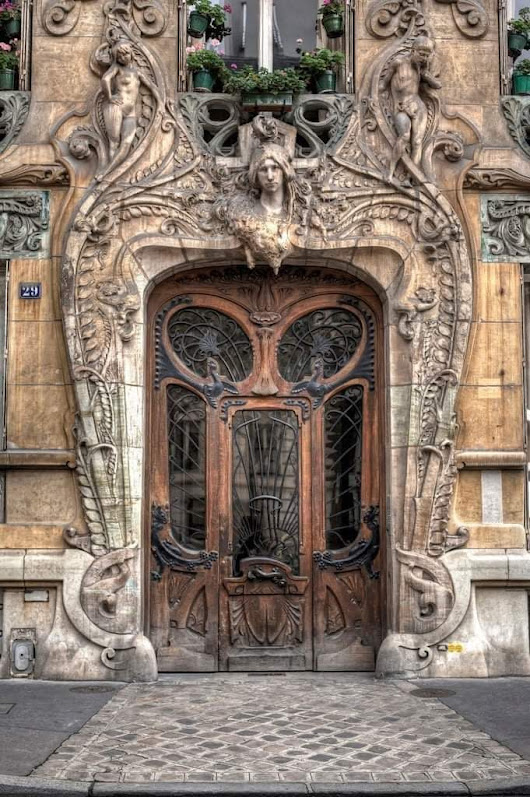29 Rapp
"Ma parole est sacrée"
Built in 1901 by Lyon born artist, Jules Lavirotte, who resided in nearby no. 3 Square Rapp when he lived in Paris, this Art Nouveau masterpiece is located at number 29, Avenue Rapp, in the 7th arrondissement of Paris, very close to the Eiffel Tower. The street and the square of the same moniker are named for 18th-century born general, Jean Rapp, while, in prior times, the road was known as Avenue du Champ-de-Mars, named for the nearby park of Champ de Mars. The detailed door was designed by sculptor Jean-Baptiste Larrive and sculpted by a variety of other artists.
General Count Jean Rapp (27 April 1771 – 8 November 1821) was a French Army officer during the French Revolutionary Wars and the Napoleonic Wars.
He was born the son of the janitor of the town hall of Colmar, then located in the Old Customs House. Promoted in 1803 to brigadier general, he led, in December 1805, a memorable attack at Austerlitz, when he charged at the head of two squadrons each of the Mounted Chasseurs and the Mounted Grenadiers of the Guard and the Guard Mameluks and decimated the Chevalier Guards of the Russian Imperial Guard.

François Gérard (1770–1837) : La bataille d'Austerlitz. 2 décembre 1805
Jean Rapp presents captured Prince Repnin-Volkonsky during the Battle of Austerlitz
Rapp is a German-surname, from the Middle High German rapp, rabe (“raven”).
rapp, from the Old Norse hrapa, from the Proto-Germanic *hrapaną, *hrappa- (“fast”), from the Proto-Indo-European *krb(ʰ)- (“quickly”).
➥ rapp, adjective (comparative rappare, superlative rappast) 🢥 quick (moving with speed)

No comments:
Post a Comment